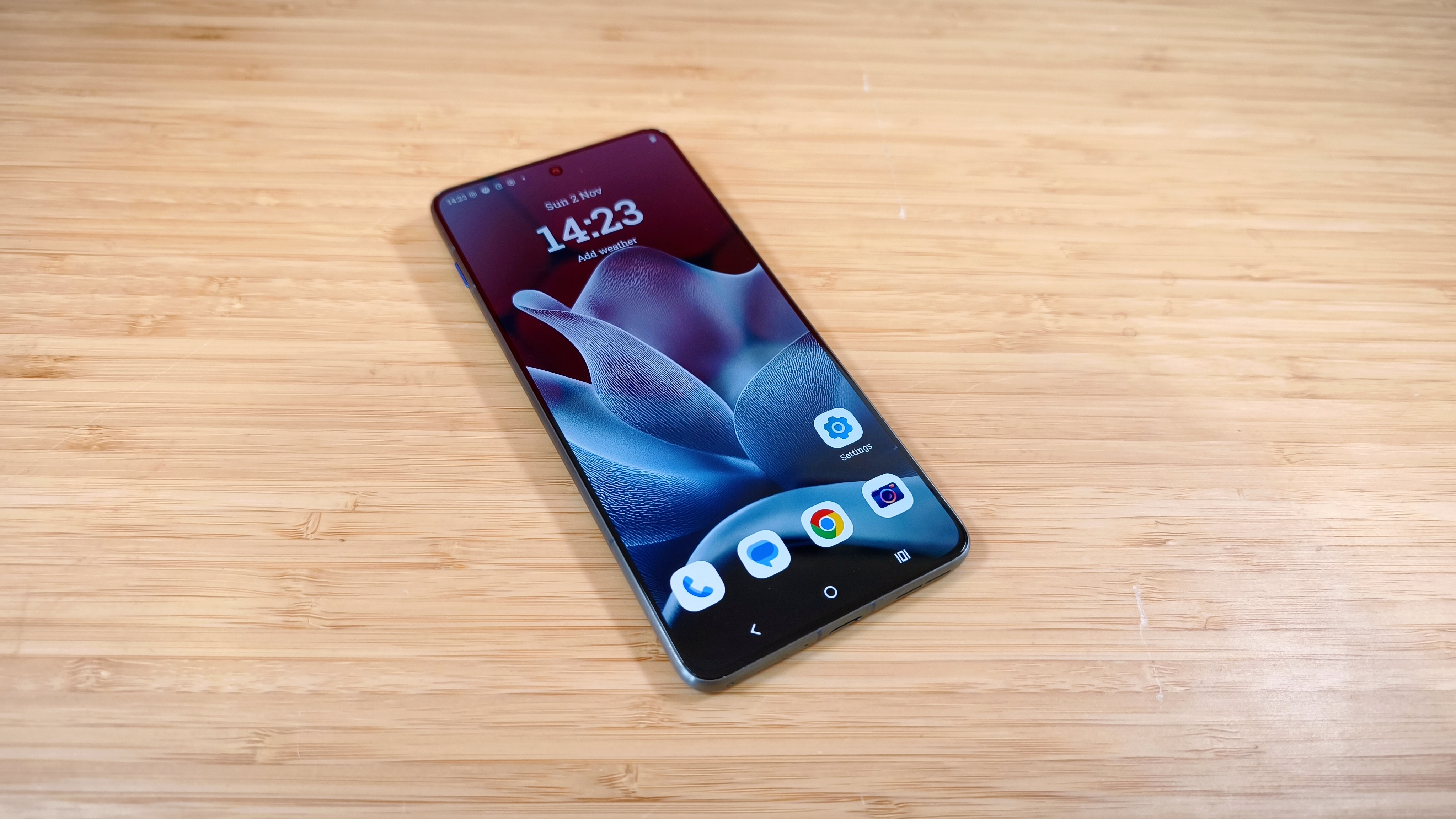Get inspired by the best indie game devs
Discover the creators pushing boundaries with bold ideas, stunning art and unforgettable gameplay.
The best indie game developers can be a rich source of inspiration for anyone hoping to enter a booming creative scene. According to Mordor Intelligence's Indie Game Market Report, the global indie game market is projected to reach $4.85bn in 2025 and $9.55bn by 2030, with mobile games accounting for half of all revenue.
Of course, market potential isn't the only reason to consider indie game development. Working in a small team – or as a solo developer – gives you the freedom to experiment and explore your ideas without interference, and you retain creative control over your IP.
There are challenges, of course. If you're starting out, there can be a steep learning curve (see our piece on getting started in game design). You have to make a lot of decisions, including which game software to use, and you often need to be a jack of all trades, drawing, designing and coding (although you could use one of the best no-code game engines or hire someone to code for you).
On Creative Bloq, we regularly post interviews and behind-the-scenes features on indie developers, learning how they approached their projects, from relatively low-budget 2D gems to expansive photoreal 3D games. Here are some of highlights for inspiration from the best indie game developers we've met so far.
19 influential indie game devs share their inspiration
1. Moonhood
Something I love about indie games is the rich variety of art styles. Sometimes a striking approach to game art can be inspired by a personal passion. Take Moonhood's The Midnight Walk, a 'cosy' stop-motion horror game completely made by hand. Co-founder Klaus Lyngeled told us that making clay sculptures was initially a hobby for him and Olov Redman. That led to the creation of PotBoy, a lantern creature with a small flame on top of his head.
The Midnight Walk contains more than 700 handmade clay models that were scanned before being assembled in Unreal Engine 5. "I basically found out it's not very hard to actually scan these 3D models," Klaus told us. He said they only worked for a year with two to three people. "Some models are quite simple to make but still look amazing in the game," he says. "It’s the rough style that makes it look handmade, but also quick to build."
02. Powerhoof
Crunchy pixel art will always generate nostalgia for the golden age of game art, but Dave Lloyd of the Australian two-person indie team Powerhoof told us that pulp adventure thriller The Drifter was influenced more by thriller novels and films than by other games.
Daily design news, reviews, how-tos and more, as picked by the editors.
The voiced dialogue makes it clear that the game is set in Australia, which Powerhoof decided was important. "I wanted the character to feel like a real person, and I think if I made them American, I feel like I wouldn't be able to know whether they'd feel grounded. I also really like the new wave of Australian cinema and Ozploitation, when people came and got funding to make schlocky B-movies."
The Drifter's origins came from a game jam in 2017 when in just five days, Dave and studio partner and art director Barney Cumming made a short point-and-click adventure game that took a more horror thriller vibe. "I was really shocked at how much impact I was able to get just with setting up the scene with some writing and having the music and audio set up to be really pumping, adding layers of tension, and having gritty art with a lot of low colour and high contrast," Dave explains.
"When we watched Let's Play videos, players would start panicking and clicking really fast, even though it's not an action game. Just seeing that kind of reaction made me really want to do something at full scale."
03. Pattatie Games
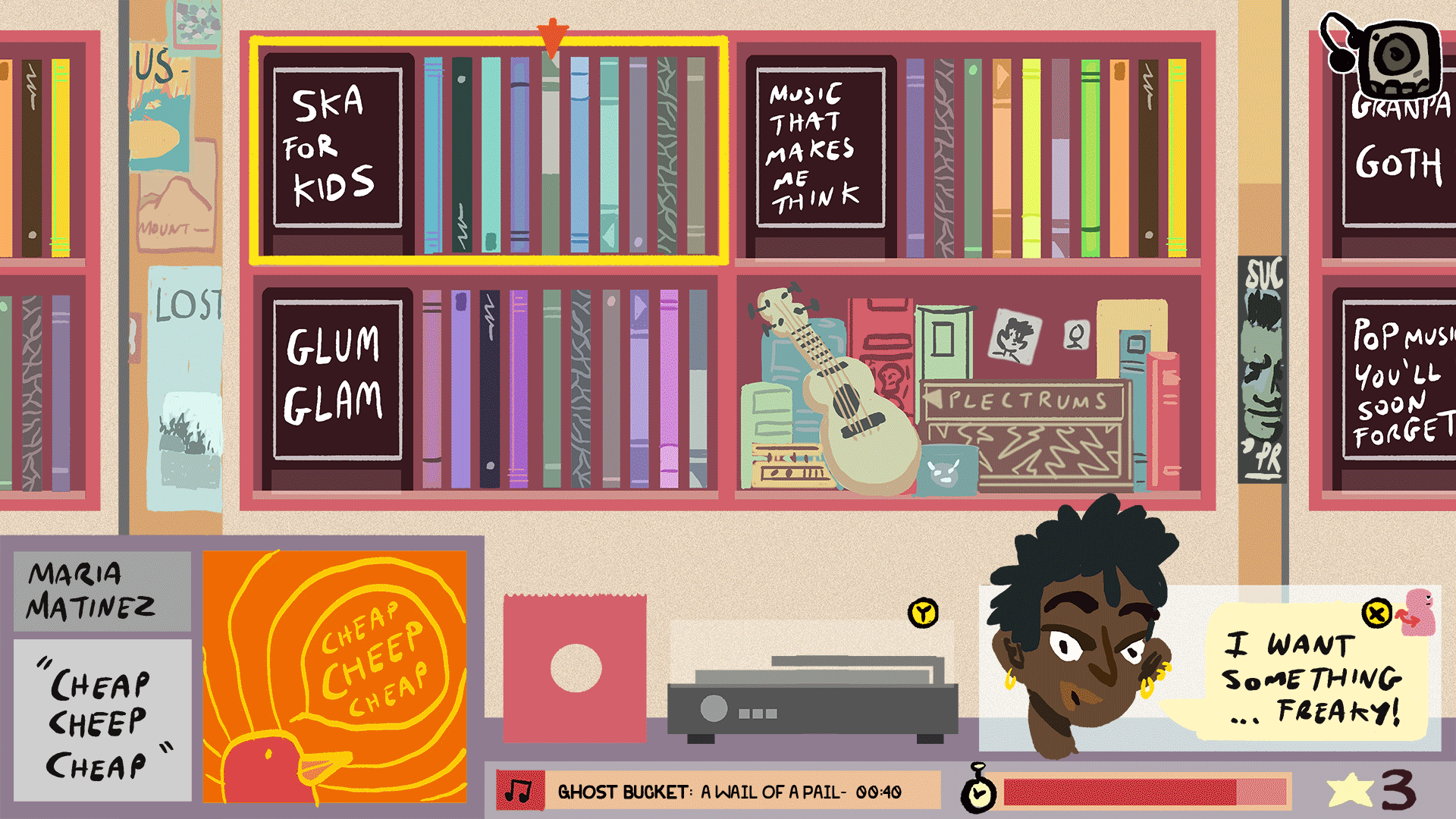
Pattatie Games' used Godot to create Wax Heads, a music store narrative game with a brash post-punk comic book style that taps into the vinyl revival. Co-creator Murray Somerwolff unapologetically based his hand-drawn art on his own tastes.
"I've got this affinity of post-punk. I used to live in London and go to a lot of gigs with posters that had this washed out kind of graphic novel style, so when I see it in my head there's just this kind of vibe that taps into it," he explains, also referencing Bryan Lee O'Malley's Scott Pilgrim series.
Pattatie Games shows how important team work can be in game design, even if the team is only two people. Murray was struggling due to his lack of programming expertise, having first designed the social deduction aspect of the game in Twine, but he found a partner in Rocío Tomé, who created tools to allow him to work in Godot.
"I can basically do whatever I want and kid myself that I can use Godot, and then she has to remind me, 'No, I made Godot work so you can use it'," he told us.
04. VOID Interactive
Indie game dev teams come in all shapes and sizes – and indie games aren't restricted to 2D, as VOID Interactive showed with tactical shooter Ready or Not. While they have a much bigger team than Pattatie, they still work with limited resources compared to AAA developers, but Unreal Engine is making photoreal 3D graphics more accessible.
Mark Ranson, Art Director, and Sean Gorman, Lead Designer, also stressed the importance of collaboration and having a shared vision, which they told us was essential when it came to striking the right balance between immersive realism and expressive design. “We have a core group of leaders from different teams,” Sean explains, “and we look at what we’re trying to achieve. Then level designers create prototypes, almost like storyboards, and we iterate fast.”
A shift to Unreal Engine 5 for the console release of the game brought more than graphical polish; it also changed how content is made. “We now know what works, and we’ve got analytics to show where players succeed or fail. It’s made us faster and better," Sean told us.
05. Q-Games / Baiyon
Some of the best indie game devs have proven that video games are art as much as entertainment, sometimes by blending a unique game art style with a novel mechanic for something that feels totally fresh. The dreamlike point cloud visuals of Dreams of Another, from Q Games and Baiyon are stunning, and then we have the twist that the pyjama-wearing protagonist's assault rifle actually brings objects into being.
Baiyon used his background in multimedia and an interest in abstract art. "I’d say that abstract expression represents a kind of freedom for me, and likewise, for the audience, there's freedom in how they interpret it," he told us. He said the biggest influence was exploring point cloud videos online, leading Q-Games to develop its own point cloud technology.
06. DenkiWorks
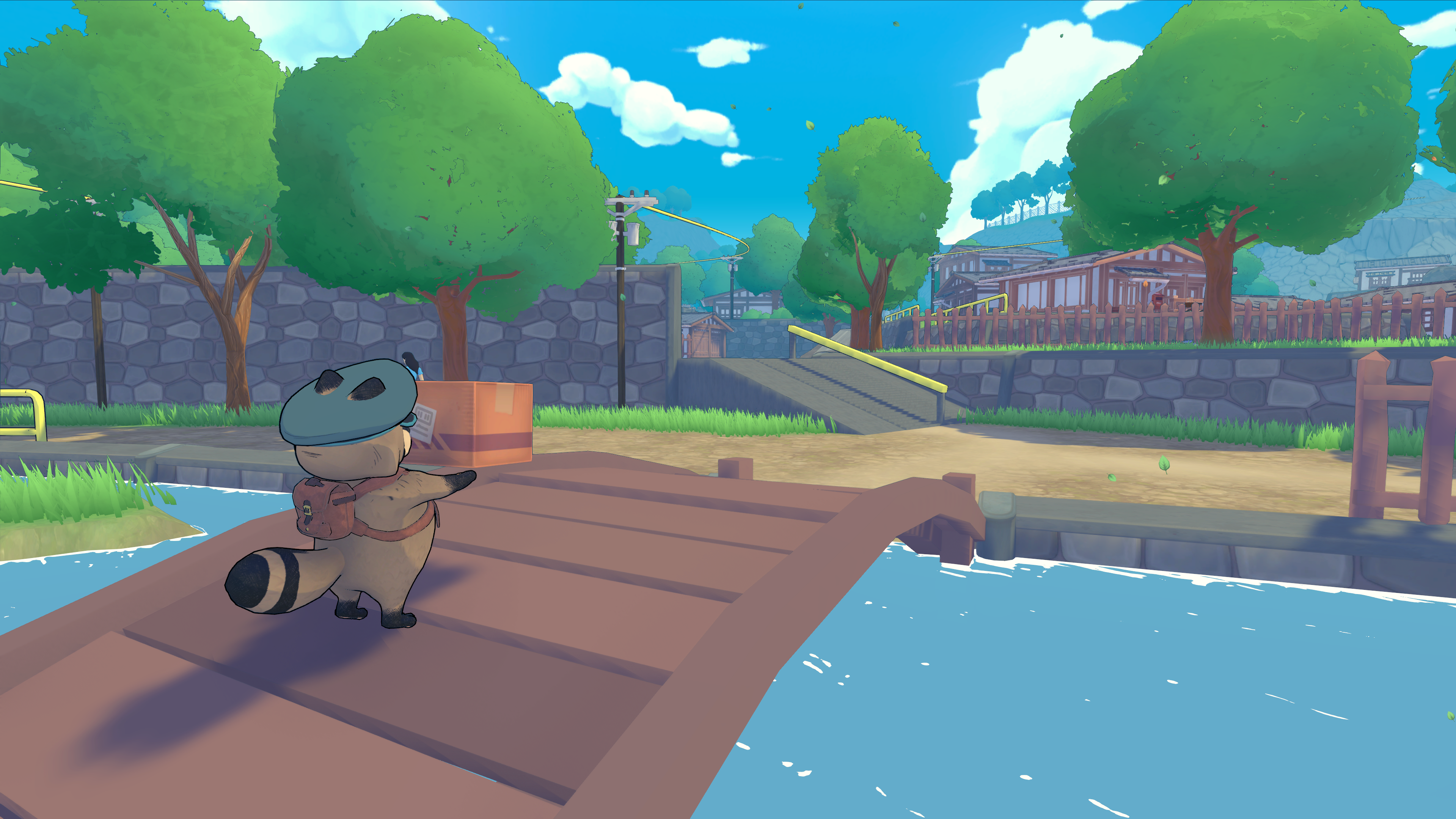
Another rich source of inspiration for indie devs can be their own experience. Tanuki: Pon's Summer's anime-like Japanese countryside setting was inspired not by Studio Ghibli but by DenkiWorks' own experience of the country.
"We're super lucky that we live in Japan," co-founder and game director Liam Edwards' told us. "We don't need any reference point from any other media, we don't need to look at other games or anime, we just look outside and we take lots of photos."
For the art style, the team took the real nature of Japan and saturated the colours a little for a more anime-like colour-grade, inspired by the photos of Akine Coco.
The aim of the game – to repair the village's shrine – was inspired by Liam's firsthand experience of Kyoto's summer festival (or matsuri). Playing as the only animal in the game (and communicating with emojis rather than speech) is intended as an allegory for being an outsider.
"I see it as a way of trying to show in a fun way what it can be like to be different, but you're still accepted and everyone's trying to work to communicate with you, even if it's not necessarily always the smoothest of experiences," Liam explained.
07. Mureena and Psychoflow Studio
We've seen pixel art above in The Drifter, but the style doesn't necessarily have to hark back to retro gaming. Bionic Bay from Juhana Myllys (Mureena) in Finland and Taiwanese indie game dev Psychoflow Studio used much broader colour palette to create a sci-fi world with a painterly, almost cinematic quality.
"There are still a lot of games doing pixel art,” Juhana told us, “but I felt like many of them were looking too much to the past. I wanted something between painting and pixel art."
Part of the motivation was a desire to make games that don’t look like games, to create something unique and timeless. Drawing inspiration from cinema as much as classic platform games from Oddworld to Flashback, Juana cited cinematographer Roger Deakins' work on Blade Runner 2049 as a major influence on the game's art style.
Working in Photoshop on a Wacom Cintiq tablet, Juhana said it took a couple of months of trial and error while experimenting with brush sizes, zoom levels and colour layering to reach Bionic Bay's distinctive look.
08. Feral Cat Den
Brooklyn-based Feral Cat Den's detective game Genesis Noir was notable for its visually striking minimalist graphic design look. Nirvana Noir surprised us again, adding 3D and psychedelic colour to identify a different timeline in the sequel.
We learned that most of the team came from a motion graphics background in commercial animation and design, hence the economical character style. And while the sequel was made in Unreal Engine, the team didn't use any of the engine's headline features, preferring to come up with their own solutions.
"One of the big goals for the art direction is to find a way that lets us cheat as much as we could," Creative lead Evan Anthony told us, adding: "I think a really important creative thought process for any small team is to find ways to simplify and put your resources into one aspect about the presentation. For Nirvana Noir, we're trying to continue with those same kinds of ideas about mixing media and using abstraction and design to render less detail and instead focus on what the most important element of the scene is."
09. Digital Sun
Valencia-based Digital Sun's Moonlighter and Moonlighter 2 provide examples of how indie game developers can create engaging gameplay by putting a twist on familiar gaming tropes. The character of the most familiar is one of the most common video game NPCs. Moonlighter plays on this by having us take the role of a shopkeeper.
While the first game was a traditional top-down affair in pixel art, The Moonlighter 2: The Endless Vault revisits the world in 3D. Game co-director Luis Pérez told us that 3D in Unity made a huge creative difference.
"3D opened up fresh opportunities – more expressive animation, bigger environments - but also new challenges like rethinking how we deliver charm and storytelling. We took what we learned and applied it to make Moonlighter 2 a true next step," Luis said.
10. Tiny Roar
Tiny Roar have a great name for an indie game developer that punches above its weight! Lou’s Lagoon felt like a lost GameCube classic, channeling some Nintendo magic in its mix of influences.
Co-founder Robert Koch told us the studio aimed to differentiate itself by breaking with stereotypes, often by combining species and elements from typical locations to create something more fresh.
"We said, let's not do an actual volcano but more like something on the back of a giant crab, but when you run on that island, you see these little particles fly around that look a bit like fire so it's reminiscent of a volcano but it's not," he explained. "Then there's a coral reef, but as an island with squid fish kind of characters. We always try to break a little bit with the stereotypes in a sense."
11. Slocap
Rematch from Slocap is another impressive example of how the best indie game developers have breathed new life into genres that might seem to offer few new avenues for exploration. It reimagines football as painterly, impressionistic' cartoon chaos that feels more like playing a real team sport.
But it goes deeper than that too with its optimistic vision of the future and big themes of social justice, diversity, fair play and advanced technology. Art director Sabrina Tobal told us about the importance of key words highlighted by director Pierre Tarno at the beginning of conception. These ncluded "futuristic", "feel-good", "optimistic", as well as "movement" and "cooperation".
That led to the use of uplifting and colourful visuals and diversity in the design of player faces and hairstyles, countering the toxicity that tends to be associated with online gaming. "We want it elegant and sharp, with chromatic aberration and the colour scheme is bright," Pierre told us.
12. Slow Bros
A lot of the best indie games we've looked into have been strongly "artist first" produtions. That was certainly the case with Harold Halibut, which used handmade poseable clay puppets and detailed sets. These were scanned and digitised into Unity, with some clever use of mocap suits from Xsens to bring the scenes to life.
Slow Bros art director and studio co-founder Ole Tillmann told us that some of the most time-consuming work on the game involved learning how to run a game company, finding money and then inventing a physical-thing-to-interactive-virtual-thing-pipeline.
"The very first reason for doing it the way we did it was that the first three people working on the game had no other way, he said. "Building things was their strongest way of telling a story, there wasn’t enough digital 3D knowledge or even 2D drawing at the time."
As an illustrator, he connected to a hand connection first, digital processing late process, then the team connected as a group over the world building. "That was informed by sitting there with actual little rooms in front of us and wondering what story to tell within them. Also everyone here is driven by experimentation and curiosity and this was a big way to connect all the different people and their expertises in really different areas over one very specific thing to somehow realise," he said.
Characters went from pencil sketches, to polymer clay puppets with sewn clothes, 3D scanned via a camera, two lights and a turntable, retopologized, rigged, animated largely via mo-cap and some more specialised hand animation.
The 3D scanning was mostly from Capturing Reality, and plenty of custom tools were made, particularly for animation and repeat processes. "We really just used whatever we could to accentuate all the things we wanted to show through from having that analog foundation. Then we did a ton of tweaking to land on the right spot between expectations for traditional stop motion animation and game animation / feel," he adds.
They focused on how the game felt play-wise first and then adjusted animation, light and scale to convey that sense of realness that stop-motion gives, celebrating the flaws and quirks of artisan animation.
13. Pikselnesia
Indonesia isn't well known for game development, and Pikselnesia were determined to represent the country authentically in bittersweet Afterlove EP.
Set in Jakarta, the game sees you play as a musician grieving for his late girlfriend as he tries to prepare for an important gig. That premise becomes all the more poignant when you learn that the team had to find the motivation to carry on after the game's original writer and director Fahmi Hasni passed away suddenly in 2022.
Determined to complete the game as a tribute, the team spent a lot of time perfecting the art style. "I remember it took us a couple months and trial and error just to make Rama’s room feel like it belonged to Rama," background artist Pinga told us. "I cannot be thankful enough for the team’s feedback and push. The key to make it right is to try again and again."
While the game is developed in Unity, the hand-drawn nature of the art means the artists use various other tools. Illustrator Soyatu did his illustrations with Procreate, a digital painting app for iPad.
14. TomorrowHead Studio
With dramatic water and lighting effects and a lot of polish make the first-person adventure Will: Follow The Light feel like the work of a much bigger team than it was. TomorrowHead’s founder and creative director, Roman Novikov, put that down to the power of Unreal Engine 5. “We have 16 people on our team, and not all of them are involved in tech, art or audio – we have a narrative designer, and so on – but we are able to achieve visuals that were once only possible with very large teams," he told us
The team already had a lot of experience in using Unreal Engine for CG, but designing a game was a different experience. “It’s a different world,” Roman said. The company went on a hiring spree, but Novikov said the biggest change for him was not getting constant feedback from a client.
The dev wanted to immerse players with lifelike navigation and take them to some unexpected places both “emotionally and physically” while examining a father and sun relationship. Novikov told us that involved months of research, including speaking to a professional sea captain and learning how to sail, to get the stormy sea right. But creating the right atmosphere was the most important aspect of development.
“When you're in the cinema watching a movie, you have a lot of things to distract you,” he says. “You have your popcorn, your Coke, people around you… but when you play a great game, you don’t even want to move. For me, that was the most important thing for WILL: Follow The Light – to get lost in the game.”
15. Yellow Brick Games
The Ubisoft veterans at Yellow Brick Games show how a stylised aesthetic can benefit gameplay in their action RPG Eternal Strands. Although Unreal Engine 5 is often used to push photorealism, they decided a less realistic look worked better for the game's physics-based use of thermodynamics in its mechanics.
"We wanted to destroy trees and walls, but if you go realistic, a tree has a lot of splinters when it starts to break, and it's harder to do," game director Frederic St. Laurent told us. "We manage to have a full wooden house that is destroyed by a dragon walking into it, which just explodes into planks, and the style kind of allows it. When I worked at a triple-A studio, the house would not be breakable because making it interactable like a game should be is too costly."
"We had the philosophy of never saying no because we cannot provide a realisation of something," CTO Louis Tremblay added. "It's always gameplay first."
Unreal 5's Chaos physics and destruction system were vital though, requiring transitioning from PhysX used in Unreal Engine 4, That had its challenges, but having the source code meant that they could dig deeper to understand problems.
16. River End Games
New tech can allow indie game developers to achieve things that would previously have been impossible. Epic Games' MetaHuman can transfer facial performance from an actor to a character model, and it works with many facial camera systems, including iPhone, putting advanced VFX capabilities in the hands of small teams.
Anders Hejdenberg, founder and creative director of River End Games, told us that for Eriksholm: The Stolen Dream, the tech enabled the small team of 15-17 developers to elevate a game’s storytelling and deliver Triple-A quality performances, quickly creating believable characters with a very wide range of facial expressions, while MetaHuman Animator captured actors’ performances and applied them as animation data to the facial rig.
The team found this unlocked the ability to make adjustments to a finished character, while speeding up their workflow by around 20 times.
"An aspect that is easily overlooked is just how difficult it can be to create realistic shaders for skin, eyes, teeth, and hair – but all of these are included in the package... not to mention the rig setup to control the blends between facial expressions, and how that is tied into blends between normal maps and textures," Anders told us.
17. Matt Newell
Some indie game developers don't start out with the intention of making a game at all. Matt Newell's interest in photography led him to start to explore Unreal Engine 4 as a way to create virtual environments as a hobby. It was only later that he decided to add mechanics to what would become Lushfoil Photography Sim, an unusual game about taking photos.
He told us that making the game might not have been impossible without Unreal Engine and Epic's resources, including the free Megascans library of photo-scanned assets. "Working by yourself, you can't really allocate a lot of time into every single asset and just have to repurpose stuff," he noted.
Many of Lushfoil Photography Sim's locations are places Matt has visited and taken reference photos of. He then browsed through asset packs to try to recreate them as faithfully as possible. He also set out to create the feel of different cameras. But while the game includes objectives, which unlock new features, Newell was determined to keep these optional, making this also a game you can explore merely for exploration's sake.
18. Square Glade Games
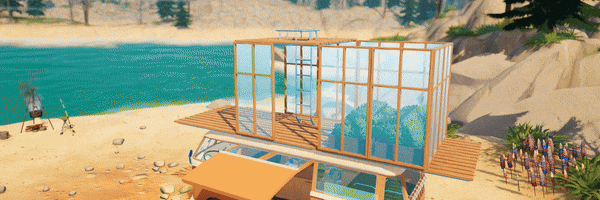
Another developer who took inspiration from travel is The Netherlands-based Square Glade Games. Studio director Tobias Snackernberg is from Germany. He told us that it was on a drive back home that he was struck with the inspiration for a cosy open world exploration game that lets players live their dream of a sustainable living in a camper van.
Outbound isn't based on any real place though, but it does feature a beautiful depiction of the outdoors. Snackerberg refers to the game as 'cosy-vival'. The team is mindful of what kind of resources you can acquire and takes a strong environmental line to make the game an optimistic vision of the future.
"We want you to have an impact on the world when you play the game," Snackerberg explains. "And when you craft an axe, you won't be able to cut down perfectly grown trees, but only wood that is already from dead trees or trees already lying on the ground. So we try to incorporate these ideas into the gameplay in a subtle way."
"We believe that players are best to make up their own stories, and that's also what we see a lot in play tests," he added. "Some players treat the game as more like a very solitary and mindful experience; other players play it more like, hey, we're going on a road trip with friends, and it feels more like a weekend away."
19. Outerloop Games
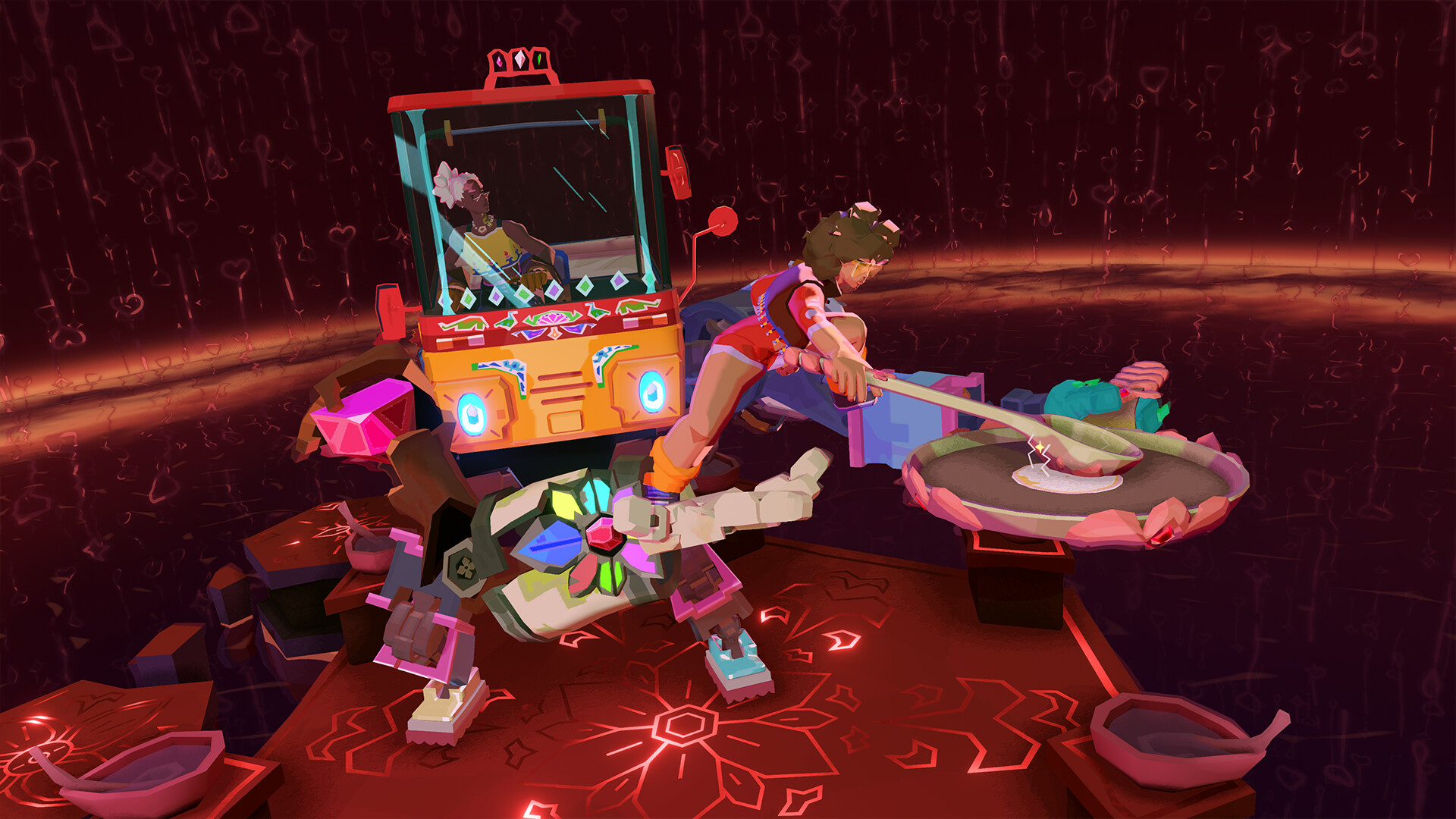
Outerloop Games strives to create accessible games about underrepresented cultures and themes. Its RPG quest Dosa Divas sees you play as two sisters, who, with their mech Goddess, travel through towns being taken over by an evil fast food empire. The story gets complicated, and there's strong allegory in the game.
"There's a scene in the demo where the villagers are like, 'We got rid of all our pots, we don't know what to do with them anymore'. It's like this in lots of sectors of the real world. Similarly, in the games space, a lot of small studios bought up into bigger studios, and we're now also seeing a kind of collapse of that, which isn't sustainable over the long term. We wanted to try to tackle that as a theme as well, but with food."
Dosa Divas is coming to PC and consoles in early 2026.
Let me know your favourite indie game developer below. And for more inspiration, see Stepford's tips for getting started in indie game design.
If you need to upgrade your kit for your own work, see our guide to the best laptops for game development.
What's the best software for indie game development?
There's no single answer to this question because it depends on the type of game you want to make, your skill level and the time you have available to learn, as well as whether you'll be working alone or with others and what budget you have.
Unity remains the most popular game engine overall, and it's used by many indie developers. Unreal Engine has become very popular for AAA games, but it's free access makes it also a great option for indie game development, particularly if you want to make a game with an art style that uses 3D realism. It can be quite a steep learning curve if you're new to game development.
For 2D games and simple mobile games, Godot Engine is becoming more and more popular. It's free and open-source and has a relatively simple node-based interface. GameMaker is also a popular option and particularly attractive for beginners thanks to its intuitive drag-and-drop approach.
If you don't want to have to learn to code at all, there are options too, including game engines like Stencyl, which is one of several options recommended by indie devs in our feature on no-code game engines.
Also see our guide to the best game development software.
As well as the game engine, you're likely to have other software needs, which will vary depending on the needs of your game. You may need 3D modelling software like Maya or Blender for making 3D models, sound software like Audacity for audio engineering, software such as Photoshop for texturing, as well as an IDE for programming and video editing software for making the trailer.
What equipment does an indie developer need?
An indie game developer needs a computer capable of running whichever software that you need choose to use. It doesn't necessarily need to be the most powerful or even powerful enough to play your finished game at the best settings, but if you're planning to work with tools like Unreal Engine and to use other demanding software like 3D modelling tools, you'll need a reasonable processor and GPU.
The specs will vary depending on if you're making a simple 2D game in Godot or GameMaker or a 3D game in Unreal Engine. You can check our guides to the most powerful laptops, the best laptops for 3D modelling and the best laptops for game development for recommendations.
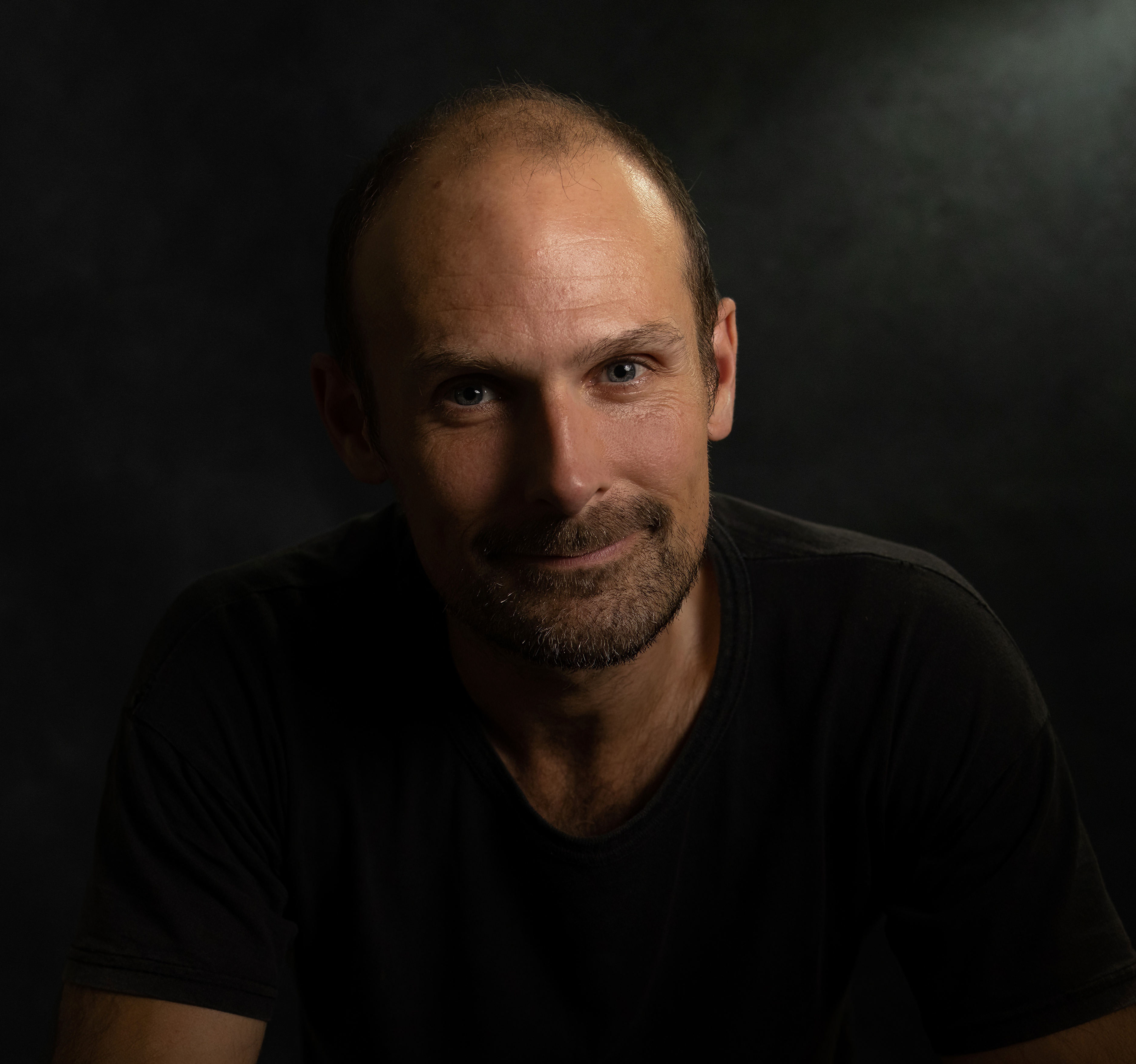
Joe is a regular freelance journalist and editor at Creative Bloq. He writes news, features and buying guides and keeps track of the best equipment and software for creatives, from video editing programs to monitors and accessories. A veteran news writer and photographer, he now works as a project manager at the London and Buenos Aires-based design, production and branding agency Hermana Creatives. There he manages a team of designers, photographers and video editors who specialise in producing visual content and design assets for the hospitality sector. He also dances Argentine tango.
You must confirm your public display name before commenting
Please logout and then login again, you will then be prompted to enter your display name.















